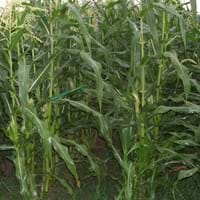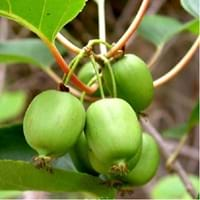Life Span
Annual
Perennial
Origin
Hybrid origin, North America, Central America, South America
Eastern Asia
Types
Not Available
Actinidia arguta, Actinidia giraldii, Actinidia hypoleuca
Number of Varieties
Not Available
Habitat
Clay soil areas, Loamy soils, Sandy areas
Dappled Shade, open Woodlands
USDA Hardiness Zone
Not Available
3-8
Sunset Zone
A1, A2, A3, H1, H2, 1a, 1b, 2a, 2b, 3a, 3b, 4, 5, 6, 7, 8, 9, 10, 11, 12, 13, 14, 15, 16, 17, 18, 19, 20, 21, 22, 23, 24
1a, 1b, 2a, 2b, 3a, 3b, 4, 5, 6, 7, 8, 9, 14, 15, 16, 17, 18, 19, 20
Habit
Upright/Erect
Vining/Climbing
Flower Color
Not Available
White, Ivory
Flower Color Modifier
Bicolor
Bicolor
Fruit Color
White, Yellow, Light Yellow, Peach
Green, Yellow green
Leaf Color in Spring
Green, Dark Green
Green, Dark Green
Leaf Color in Summer
Green, Dark Green
Dark Green
Leaf Color in Fall
Green, Dark Green
Dark Green
Leaf Color in Winter
Green, Dark Green
Light Green
Leaf Shape
Long Linear
Oval
Plant Season
Spring, Summer, Fall, Winter
Spring, Summer, Fall
Sunlight
Full Sun
Full Sun, Partial Sun
Growth Rate
Very Fast
Medium
Type of Soil
Clay, Loam, Sand
Loam
The pH of Soil
Neutral
Neutral
Soil Drainage
Well drained
Well drained
Bloom Time
Indeterminate
Spring, Late Spring, Early Summer
Tolerances
Drought
Shade areas
Where to Plant?
Ground, Pot
Ground, Pot
How to Plant?
Seedlings, Transplanting
Grafting, Stem Cutting
Plant Maintenance
Medium
Low
Watering Requirements
Average Water Needs, Do Not over Water, Needs watering once a week, Never Over-water, Over-head watering
Average Water Needs, Requires regular watering
In Summer
Lots of watering
Regular watering required
In Spring
Moderate
Moderate
In Winter
Average Water
Average Water
Soil Type
Clay, Loam, Sand
Loam
Soil Drainage Capacity
Well drained
Well drained
Sun Exposure
Full Sun
Full Sun, Partial Sun
Pruning
Remove damaged leaves, Remove dead branches, Remove dead leaves
Remove damaged leaves, Remove dead branches, Remove dead leaves
Fertilizers
Nitrogen, Phosphorous, Potassium, Well-rotted manure
Apply 10-10-10 amount, fertilize twice a year
Pests and Diseases
Aphids, Armyworm, Beetles, Flea Beetles, Leaf spot, Red blotch, Seedcorn maggot, Worms
Botrytis head rot, Japanese Beetles, Leaf Rollers, Nematodes, Phytophthora, Root rot, Sclerotinia blight, Spider mites, Thripes
Plant Tolerance
Drought
Shade areas
Flowers
Insignificant
Showy
Flower Petal Number
Not Available
Single
Foliage Texture
Coarse
Medium
Foliage Sheen
Glossy
Glossy
Attracts
Aphids, Beetles, Not Available
Cats
Allergy
Asthma, Diarrhea, Headache, Nausea, Runny nose, Skin rash, sneezing, Vomiting
Not Available
Aesthetic Uses
Not Used For Aesthetic Purpose
Cottage Garden
Beauty Benefits
Not Available
Not Available
Environmental Uses
Food for animals, Food for birds, Food for insects
Shadow Tree
Medicinal Uses
Iron, Potassium, Vitamin C
Antioxidants, Fiber, Folate, Rich in Potassium, Vitamin C
Part of Plant Used
Kernel
Fruits
Other Uses
Used as a nutritious food item, Used for its medicinal properties
Grown for shade
Used As Indoor Plant
No
No
Used As Outdoor Plant
Yes
Yes
Garden Design
Edible, Herb, Vegetable
Edible, Feature Plant, Vine
Botanical Name
ZEA mays var rugosa
ACTINIDIA arguta
Common Name
Sweet Corn
Hardy Kiwi
In Hindi
स्वीट कॉर्न
हार्डी कीवी
In German
Mais
Hardy Kiwi
In French
Le maïs sucré
kiwai
In Spanish
Maíz dulce
kiwi hardy
In Greek
γλυκό καλαμπόκι
σκληραγωγημένα ακτινίδια
In Portuguese
milho doce
kiwi Hardy
In Polish
Kukurydza
hardy kiwi
In Latin
Dulcis frumentum
Hardy kiwi
Phylum
Magnoliophyta
Magnoliophyta
Class
Liliopsida
Magnoliopsida
Family
Poaceae
Actinidiaceae
Clade
Angiosperms, Commelinids, Monocots
Angiosperms, Asterids, Eudicots
Tribe
Andropogoneae
Not Available
Subfamily
Not Available
Actinidiaceae
Number of Species
Not Available
Not Available
Properties of Sweet Corn and Hardy Kiwi
Wondering what are the properties of Sweet Corn and Hardy Kiwi? We provide you with everything About Sweet Corn and Hardy Kiwi. Sweet Corn doesn't have thorns and Hardy Kiwi doesn't have thorns. Also Sweet Corn does not have fragrant flowers. Sweet Corn has allergic reactions like Asthma, Diarrhea, Headache, Nausea, Runny nose, Skin rash, sneezing and Vomiting and Hardy Kiwi has allergic reactions like Asthma, Diarrhea, Headache, Nausea, Runny nose, Skin rash, sneezing and Vomiting. Compare all the properties and characteristics of these two plants. Find out which of these plant can be used as indoor plant. If you are interested to decorate your house and garden, find out aesthetic uses, compare them and select the plant which will beautify your surrounding. Along with beautification, try comparing medicinal and edible uses of Sweet Corn and Hardy Kiwi and you can choose the plant having best and most benefits.
Season and Care of Sweet Corn and Hardy Kiwi
Season and care of Sweet Corn and Hardy Kiwi is important to know. While considering everything about Sweet Corn and Hardy Kiwi Care, growing season is an essential factor. Sweet Corn season is Spring, Summer, Fall and Winter and Hardy Kiwi season is Spring, Summer, Fall and Winter. The type of soil for Sweet Corn is Clay, Loam, Sand and for Hardy Kiwi is Loam while the PH of soil for Sweet Corn is Neutral and for Hardy Kiwi is Neutral.
Sweet Corn and Hardy Kiwi Physical Information
Sweet Corn and Hardy Kiwi physical information is very important for comparison. Sweet Corn height is 180.00 cm and width 60.00 cm whereas Hardy Kiwi height is 550.00 cm and width 90.00 cm. The color specification of Sweet Corn and Hardy Kiwi are as follows:
Sweet Corn flower color: Not Available
Sweet Corn leaf color: Green and Dark Green
Hardy Kiwi flower color: White and Ivory
- Hardy Kiwi leaf color: Green and Dark Green
Care of Sweet Corn and Hardy Kiwi
Care of Sweet Corn and Hardy Kiwi include pruning, fertilizers, watering etc. Sweet Corn pruning is done Remove damaged leaves, Remove dead branches and Remove dead leaves and Hardy Kiwi pruning is done Remove damaged leaves, Remove dead branches and Remove dead leaves. In summer Sweet Corn needs Lots of watering and in winter, it needs Average Water. Whereas, in summer Hardy Kiwi needs Regular watering required and in winter, it needs Average Water.



